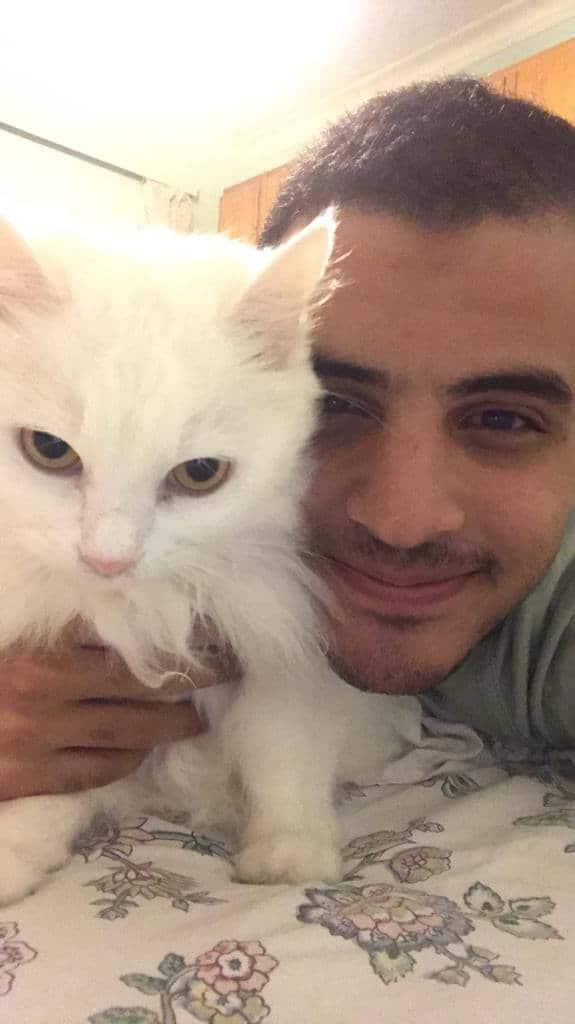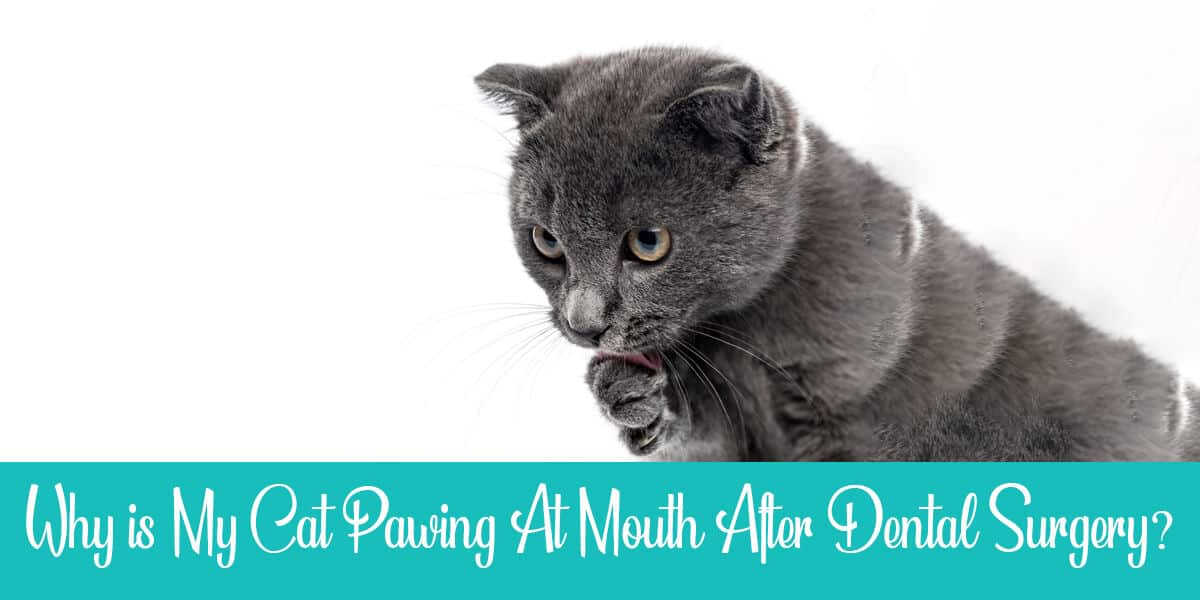After coming back from the vet and finally having your cat home, you notice it keeps pawing at its mouth. This can be worrying, especially when you don’t understand why.
Taking care of your cat after surgery can be a complicated process, but it’s possible to make it easier. Let’s take a look at why your cat is pawing at its mouth and what to keep an eye for.
Table of Contents
Cat Pawing at Mouth After Dental Surgery: The Summary
If your cat is pawing at its mouth after dental surgery, it’s usually due to pain that you can manage at home. Yet, in some cases, it could be a sign of postoperative infection, which your vet will need to check out.
Why Is My Cat Pawing at Its Mouth?
Before you start analyzing your cat, you need to have a basic idea about what happened in its mouth.
Depending on the procedure that your cat went through, recovery will be different. Minor dental treatments and having a dental extraction will have different healing times.
It’s always a good idea to check in with your vet. You should ask as many questions as possible to make sure you know how to best take care of your cat.
Is It a Postoperative Complication?
In most cases, it’s not. After getting back from the hospital, you might see your furry friend acting up. Straight away, you think something went wrong with the surgery. While that might happen, it’s more often than not that the cat is experiencing postoperative pain.
Related:
– What to Feed a Cat With a Sore Throat/Mouth?
– Something Poking Out of Cat Chest, What’s That?
– Miralax Dosage for a 17-Pounds Cat
– Common Questions After Removing Cat Catheter
You should watch your cat the first 24 hours after surgery and make sure it’s not exhibiting any of the following:
- Any swelling or bleeding around the wound
- Puffy eyes
- Uncontrollable drooling
- Drainage of any fluid from orifices
If you notice any of those happening to your cat, contact your vet as soon as possible.
Normal Cat Behavior vs. Pain Behavior
You need to tell the difference between what is your cat’s normal behavior and what is a response to pain. ‘Normal’ here doesn’t mean what you’re used to seeing from your cat before surgery. It will also include some new coping techniques that your cat picked up to deal with pain.
Unlike most house pets, cats tend not to show outward signs of pain. Especially when they’re going through chronic pain, this is an attempt to hide any appearing ‘weakness’ from anything that may want to hurt it.
So you should study your cat’s behavior. For example, how often it plays, eats, or even its social interactions. Your cat may be trying to communicate what it’s going through.
Is Your Cat in Pain?
The last thing any of us want to see is our cats in pain, but pain can actually be a good thing. Pain alerts you and your cat that there’s something wrong that needs attention.
Cats have pain sensors all over their bodies. They use them like ours as a form of protection to help figure out what is wrong without doing any extra damage. Pain also increases heart rate, which will increase blood flow, which in turn helps with healing.
Signs Your Cat Is in Pain
- Your cat has stopped grooming itself
- Finding that your cat prefers to hide a lot
- Being very sensitive to touch or any general handling
- Not using the litter box
- Your cat has gotten aggressive when approached
- Different eating habits
- Your cat vocalizing
- Difficulty jumping on and off of high objects
These are some of the signs. Your cat can use any of those to signal pain or even a combination of them.
If, for any reason, you think your cat is in pain, it’s essential to take it to the vet immediately. The vet will then examine the cat’s heart rate and body temperature.
The vet will want to hear about any changes in your feline friend’s behavior. So, it’s important to make a mental note of anything unusual that your cat has been doing.
Users Also Read:
– What to do if my cat’s liver enzymes are more than 500?
– Cat Pee Smells Like Burnt Rubber, Is That Normal?
– What Could Cause Hair Loss on Tip of a Cat’s Tail?
– Are Yankee Candles Safe for My Cat?
How to Care For a Cat in Pain
Your vet should’ve already talked you through a regular pain management program, which will be different for each individual cat.
Pain management programs may include:
- Pain killers
- Non-Steroidal Anti-Inflammatory Drugs (NSAID), to remove inflammation
- Acupuncture, to reduce stress and promote healing
- Exercises that improve blood circulation
The course of action will depend on your cat’s general health condition. It will also depend on how long it’ll need the pain management program.
Drugs and treatments that are for humans are not usually compatible with cats. So, make sure that you don’t give your cat any medication that the vet hasn’t prescribed for the cat.
What Should Your Cat Be Eating After Dental Surgery?
To make sure that your cat makes a speedy recovery, another crucial aspect of healing is eating. What the cat is eating and how much it eats matters.
In most cases, your cat is going to need a small meal about 2-3 hours after the surgery. Depending on how extensive the procedure was, this is going to be different for every case.
You should ask your vet for clear dietary instructions that might include:
- A liquid or watered-down diet
- Wet foods
- Kibble that you soften with water
- Canned food
- Lots of water, as much as possible
Some cases may need extra supplements or special nutrition. If your cat is still not eating at all after 24 hours, see your vet.
It’s a must that you follow the dietary instructions for as long as they’re prescribed. You’ll need to keep an eye on how the cat is reacting to the food so that you can make changes.
Wrapping Up
If your cat is pawing at its mouth after dental surgery, in most cases, it’s because of normal postoperative pain. So you should determine if it’s regular behavior or pain-related. Another thing that will make a huge difference with your furry friend’s healing is its eating habits.
Making sure you understand how your cat signals pain will make it easier to know what your furry friend needs to manage it.
For the first 24 hours after surgery, keep an eye on your cat. This is to make sure that you catch any complications before they escalate, and remember to always consult your vet as soon as you notice any odd symptoms.

I’ve been living with cats since 2008 and I can confidently say I have more feline friends than humans lol. I currently live with 5 cats in different life stages; two of them are less than one year old, one is 2-ish years old and the oldest two are 9-ish years old. I’ve developed a strong bond with cats over the years and I’m eager to share my experience through this blog. You can learn more about my cats here.

